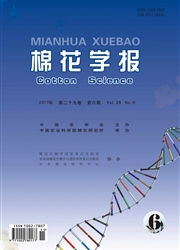

 中文摘要:
中文摘要:
棉花幼根中含有大量酚类物质、多糖和单宁等多种次生代谢物,且根部取样时会带有少量的泥土和有机质等污染物,因此棉花幼根RNA提取难度较大。本文采用两种试剂盒法和改良的异硫氰酸胍法,筛选适合转录组测序的提取棉花幼根RNA的方法。与试剂盒法相比,改良的异硫氰酸胍法具有浓度高、质量好等特点,能够满足转录组测序的要求。
 英文摘要:
英文摘要:
It is difficult to obtain high-quality RNA from young cotton roots, because the root tissues contain large amounts of various secondary metabolites, including polyphenolics, polysaccharides, and tannins. Also, soil and other organic contaminants are often mixed with the roots when sampling. In this study, two commercial kits and an improved guanidine thiocyanate method were screened as methods to isolate total RNA from young cotton roots, with the aim of producing RNA of sufficient quality for RNA-sequencing analyses. The results showed that compared with the plant RNAout kits, the improved guanidine thiocyanate method resulted in greater quantities of RNA, and higher RNA quality. The RNA obtained using this method was suitable for RNA-sequencing analyses.
 同期刊论文项目
同期刊论文项目
 同项目期刊论文
同项目期刊论文
 期刊信息
期刊信息
